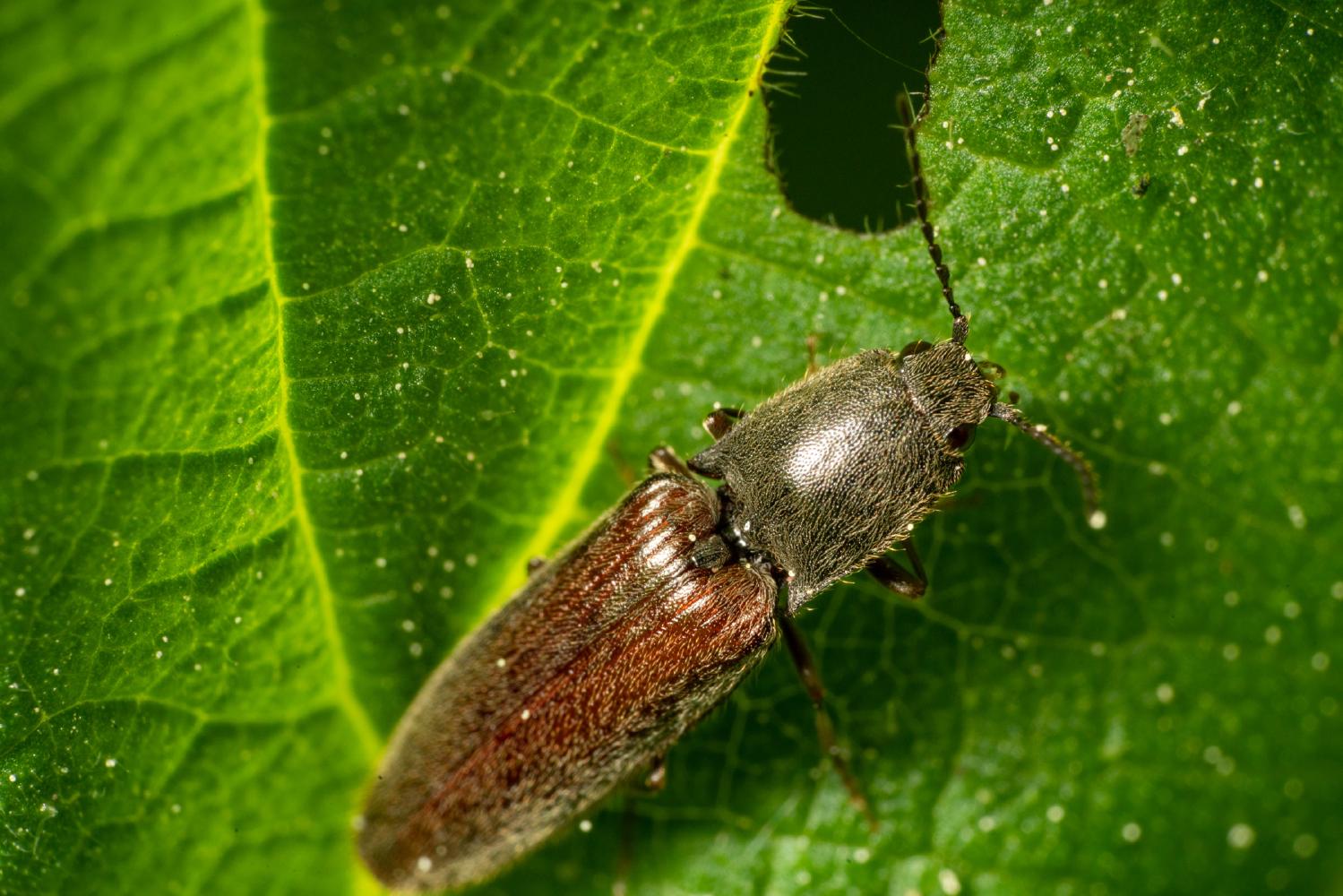Click Beetles
Lat. “Elateridae“
family
of order
“Beetles“
1 family, 10 species
Click beetles, also known as Elateridae, are a family of insects known for their ability to make a clicking sound when flipped onto their backs and then right themselves with a sudden, flipping motion. The name Elateridae comes from the Greek word ἐλατήρ, meaning one who drives, pushes, or beats out. Most click beetles are small and brown or black, with some being large and colorful. The adults are usually nocturnal and feed on plants, while the larvae, known as wireworms, are saprophagous or predatory. Some wireworms are serious agricultural pests, while others are bioluminescent. Wireworms are able to quickly locate food in the soil and their ability to recover from insecticide exposure makes them difficult to eradicate once they infest crops. The oldest known click beetle species date back to the Triassic period.
Hierarchy
Etymology
Leach took the family name from the genus Elater, coined by Linnaeus in 1758. In Greek, ἐλατήρ means one who drives, pushes, or beats out. It is also the origin of the word “elastic”, from the notion of beating out a ductile substance.
Description and ecology
Some click beetles are large and colorful, but most are under two centimeters long and brown or black, without markings. The adults are typically nocturnal and phytophagous, but only some are of economic importance. On hot nights they may enter houses, but are not pests there. Click beetle larvae, called wireworms, are usually saprophagous, living on dead organisms, but some species are serious agricultural pests, and others are active predators of other insect larvae. Some elaterid species are bioluminescent in both larval and adult form, such as those of the genus Pyrophorus. Larvae are elongate, cylindrical or somewhat flattened, with hard bodies, somewhat resembling mealworms. The three pairs of legs on the thoracic segments are short and the last abdominal segment is, as is frequently the case in beetle larvae, directed downward and may serve as a terminal proleg in some species. The ninth segment, the rearmost, is pointed in larvae of Agriotes, Dalopius and Melanotus, but is bifid due to a so-called caudal notch in Selatosomus (formerly Ctenicera), Limonius, Hypnoides and Athous species. The dorsum of the ninth abdominal segment may also have sharp processes, such as in the Oestodini, including the genera Drapetes and Oestodes. Although some species complete their development in one year (e.g. Conoderus), most wireworms spend three or four years in the soil, feeding on decaying vegetation and the roots of plants, and often causing damage to agricultural crops such as potato, strawberry, corn, and wheat. The subterranean habits of wireworms, their ability to quickly locate food by following carbon dioxide gradients produced by plant material in the soil, and their remarkable ability to recover from illness induced by insecticide exposure (sometimes after many months), make it hard to exterminate them once they have begun to attack a crop. Wireworms can pass easily through the soil on account of their shape and their propensity for following pre-existing burrows, and can travel from plant to plant, thus injuring the roots of multiple plants within a short time. Methods for pest control include crop rotation and clearing the land of insects before sowing. Other subterranean creatures such as the leatherjacket grub of crane flies which have no legs, and geophilid centipedes, which may have over two hundred, are sometimes confused with the six-legged wireworms.
Evolution
The oldest known species date to the Triassic, but most are problematic due to only being known from isolated elytra. Many fossil elaterids belong to the extinct subfamily Protagrypninae.
References
Rines, George Edwin, ed. (1920). “Click Beetle” . Encyclopedia Americana.
External links
Media related to Elateridae at Wikimedia Commons Data related to Click beetle at Wikispecies Elateridae. Click Beetles of the Palearctic Region.On the University of Florida / Institute of Food and Agricultural Sciences Featured Creatures website:
Click beetles, Alaus spp. Conoderus rudis (Brown) Conoderus scissus Schaeffer
Ancestry Graph
Further Information
Copyright

This article uses material from the Wikipedia article Elateridae the free encyclopedia Wikipedia which is released under Creative Commons Attribution-ShareAlike 4.0 International License). On Wikipedia a list of authors is available.
